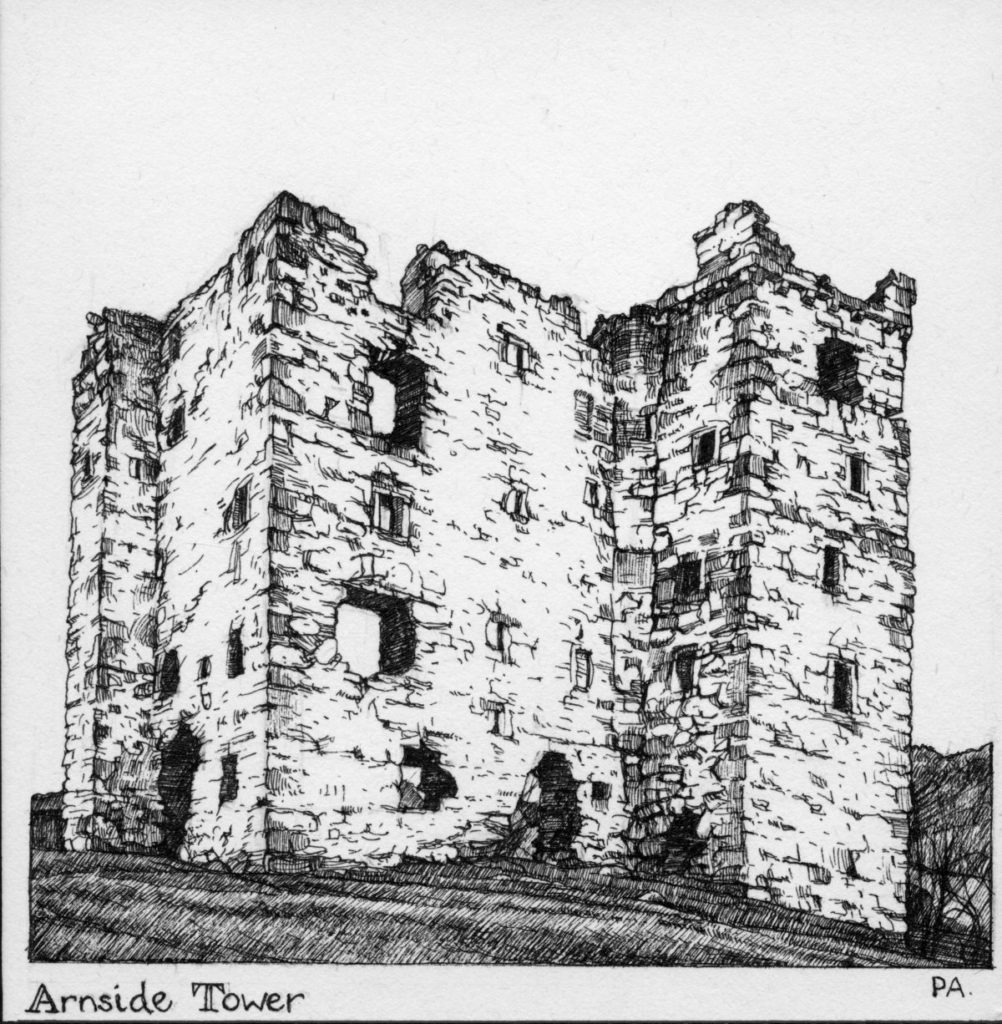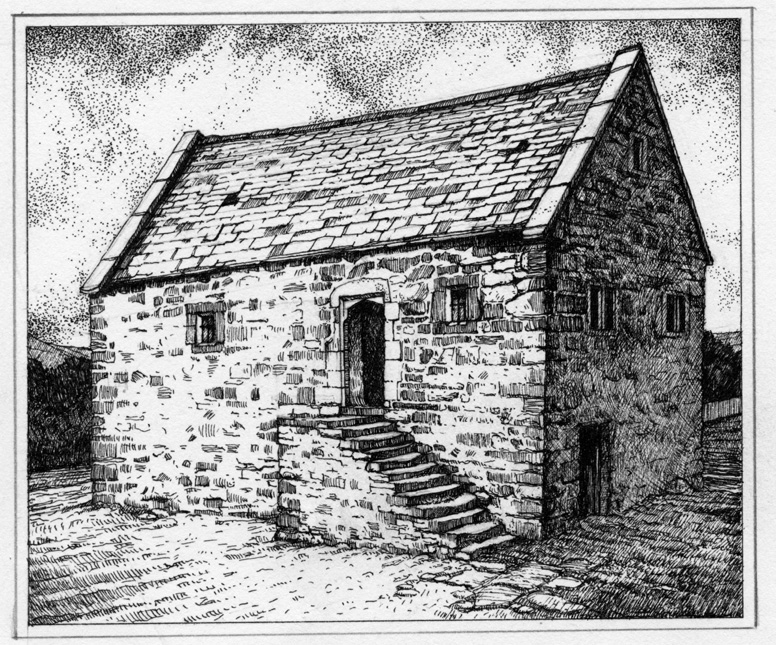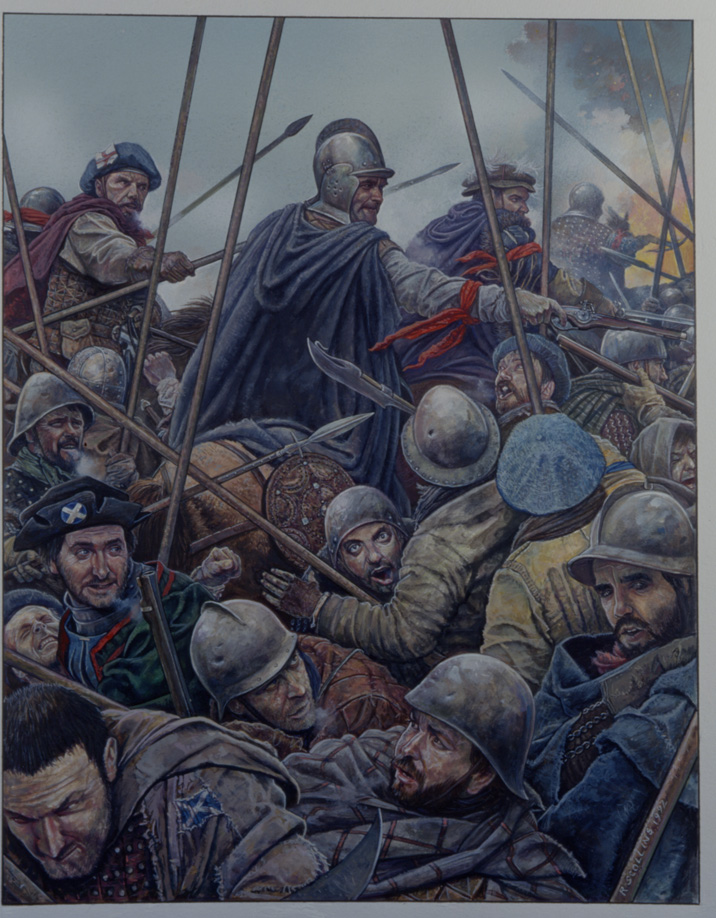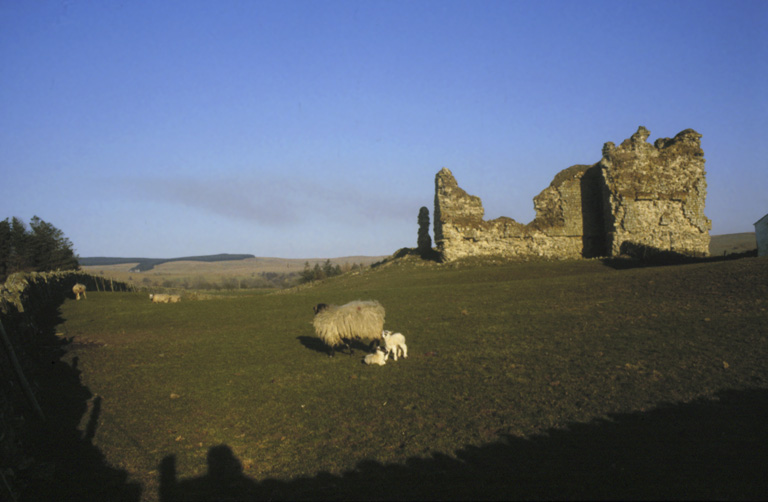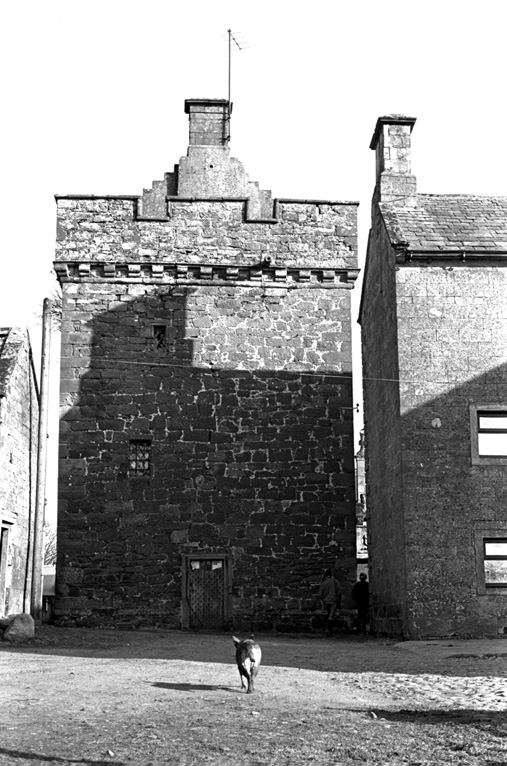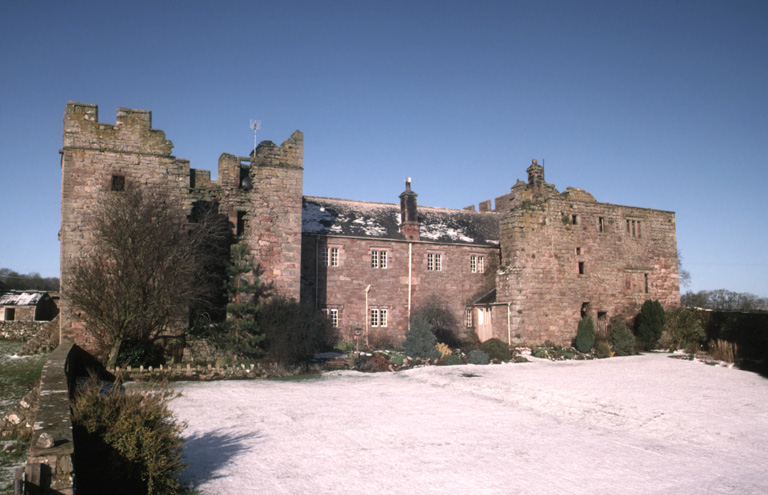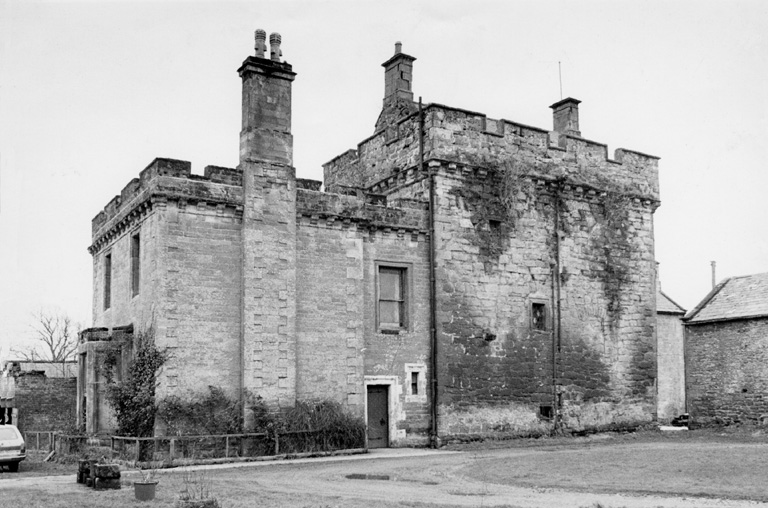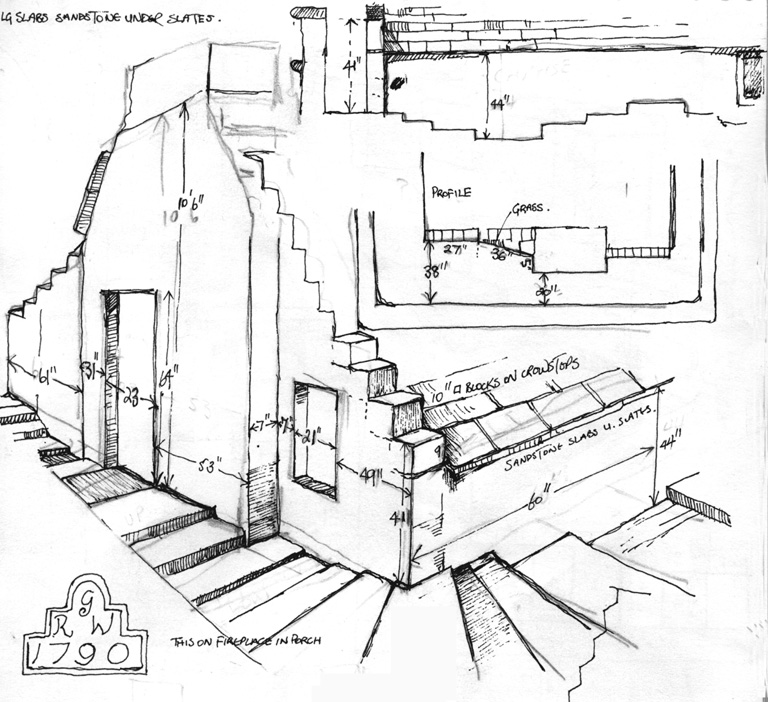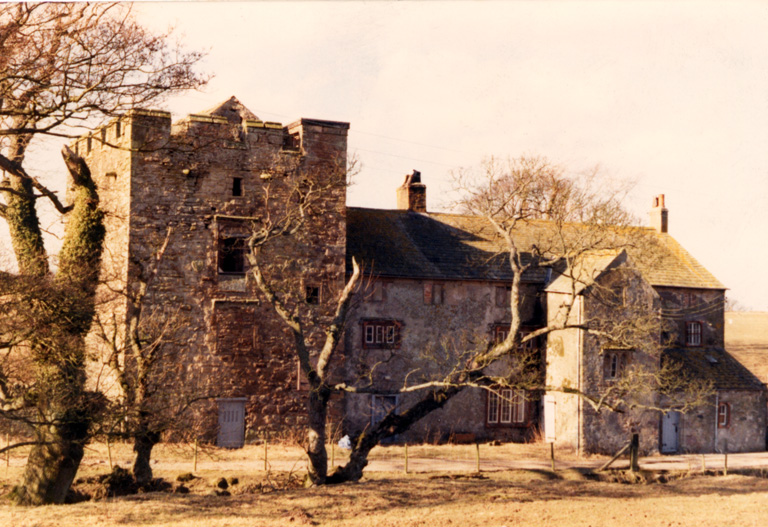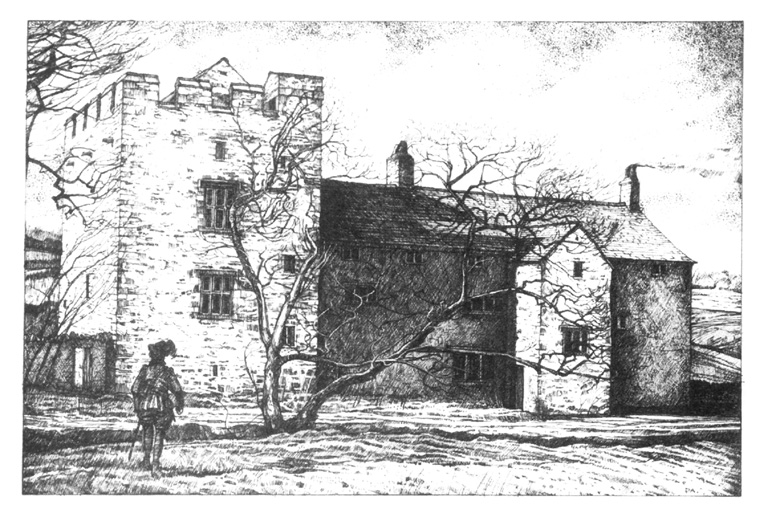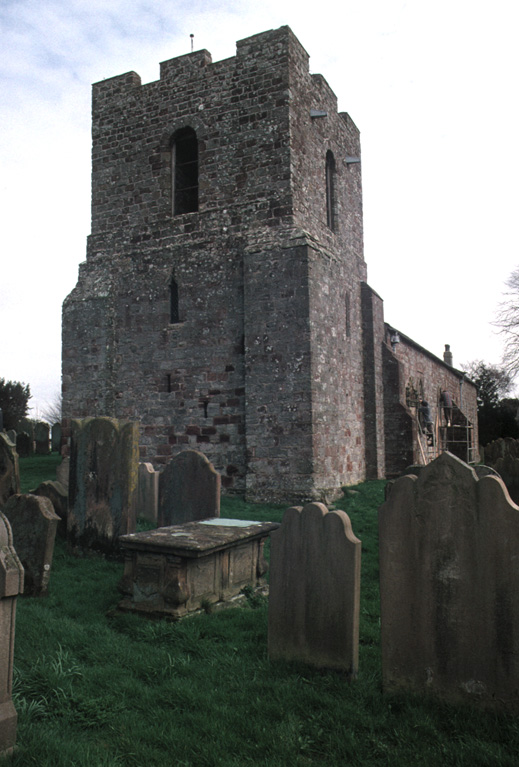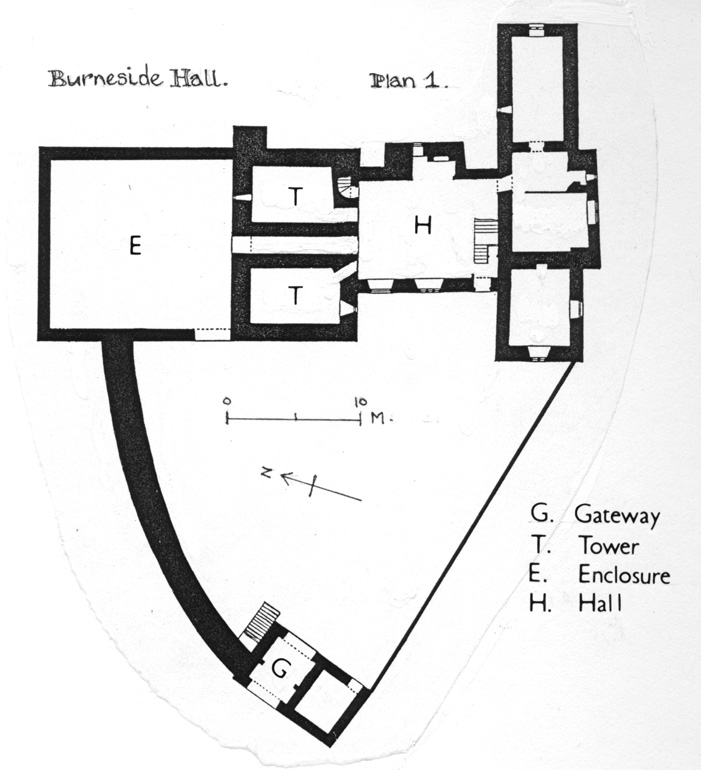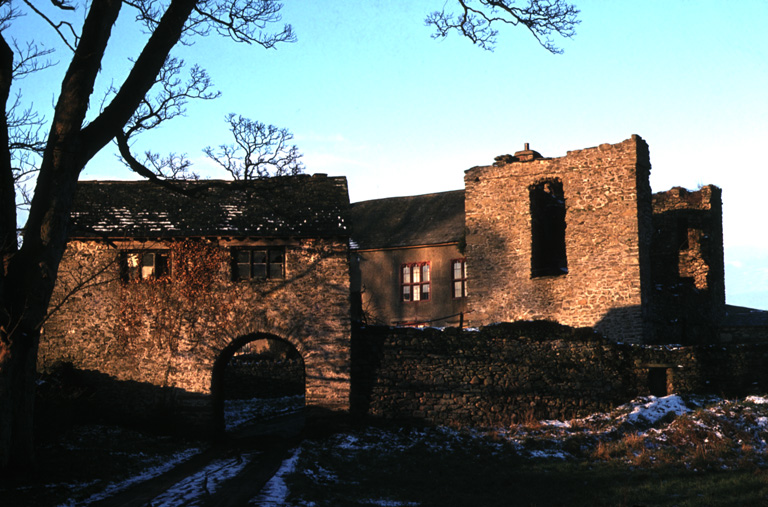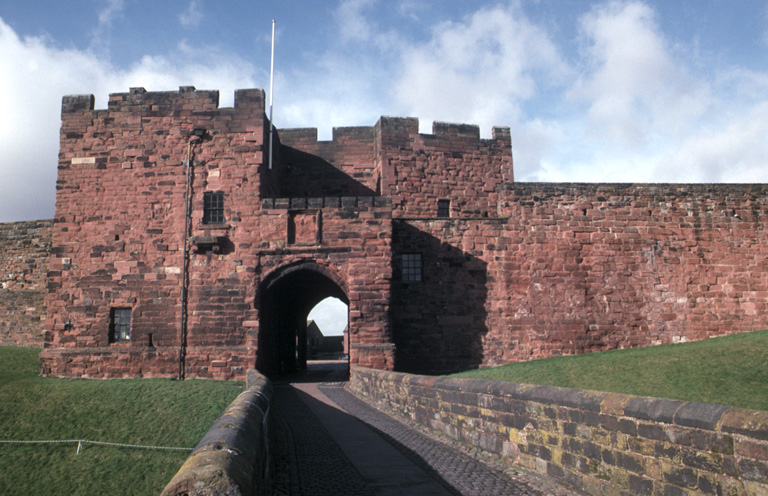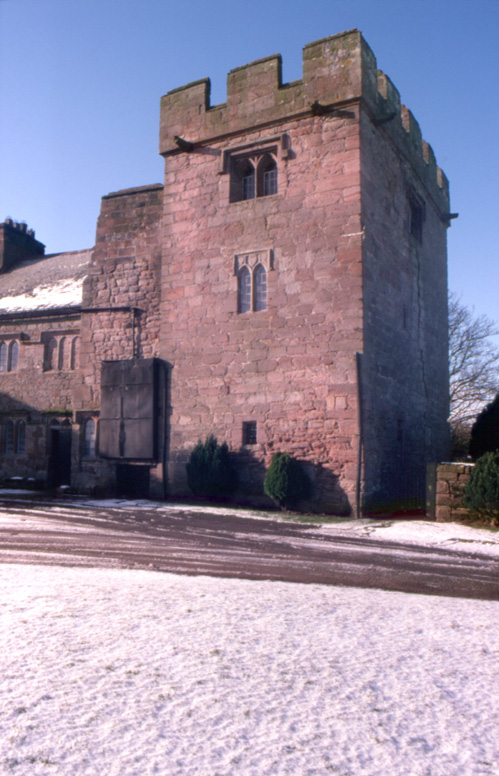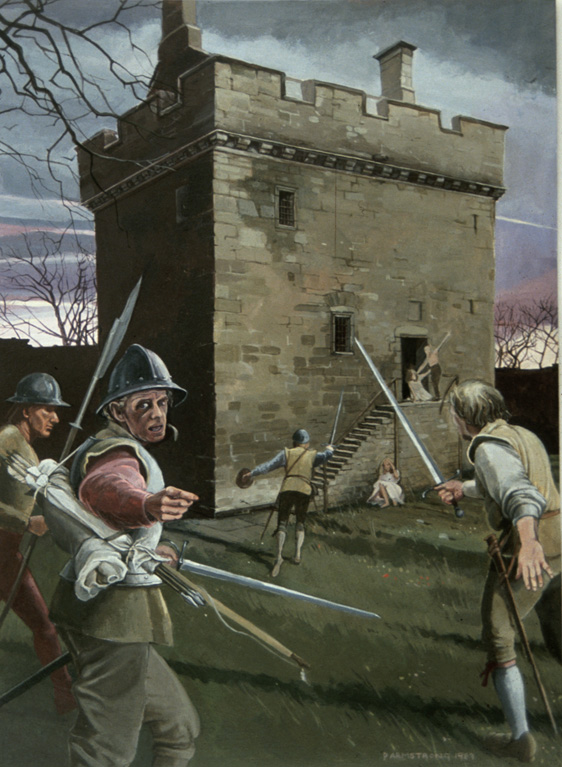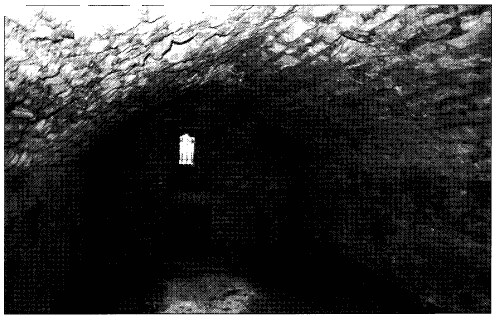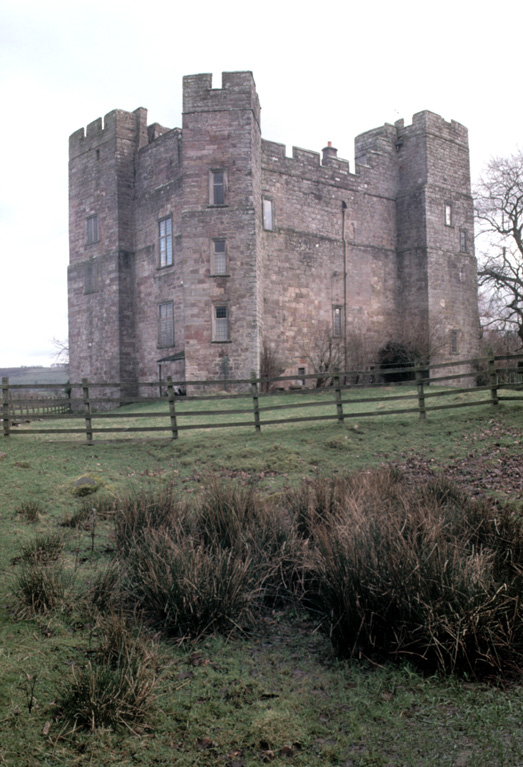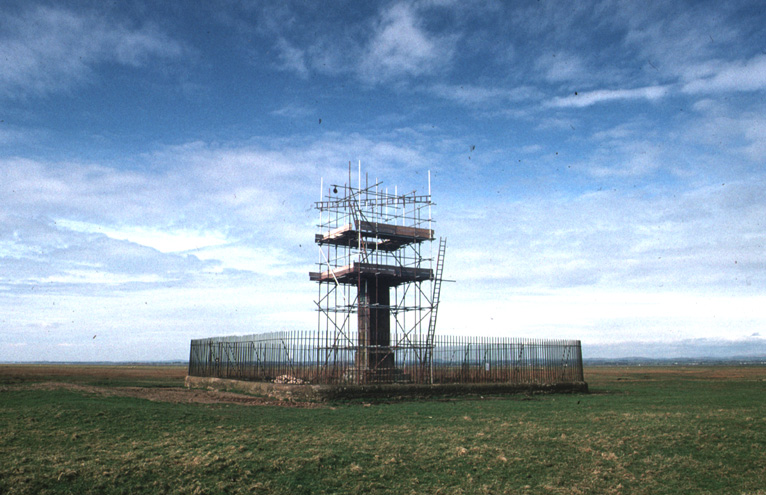- All
- Actions & Battles
- Cumberland
- Reiver People
Arnside Tower Cumbria
Arnside Tower. Arnside Tower, Arnside, Cumbria, drawing from a 1986 sketchbook by Pete Armstrong. Arnside Tower stands about a mile from the town of Arnside on the River Kent, near the northern end of Morecambe Bay. The road to Silverdale passes by the foot of the hill on which it stands. Built in 1375 in…
Askerton Castle, Gilsland, Cumbria
Askerton is remotely sited on high open ground on the south-west flank of the Cheviots between Gilsland and Bewcastle. The buildings here are clustered round a courtyard and have been much restored and altered over the years. The castle protected this area from the inroads of the notorious Reivers of Liddesdale. The main block is…
Bastle at White House Farm, Glassonby, Cumbria
Reconstruction drawing of Bastle at White House Farm, Glassonby, Nr Penrith, Cumbria A bastle stands among farm buildings at White House Farm in the village of Glassonby. The basement is not stone vaulted; the floor is carried on beams. The original ground-floor doorway is in the gable end wall. The doorway to the upper storey…
Battle of Solway Moss 1542
Solway Moss, The Battle Of, 1542 The Battle of Solway Moss, 1542; Thomas Wharton's “prickers” rout the Scots Painting of The Battle of Solway Moss, by Rick Scollins, c.1986. The illustrator Richard Scollins specialised in military subjects. His painting of “The Battle of Solway Moss” is among his best work; the history of the Anglo-Scottish…
Bewcastle Castle, Cumbria
Bewcastle Castle or Bueth's Castle also, Belcastell, Boa, Bothe, Bowe; Bewcastle, Cumbria The ruins of Bewcastle stand on a mound in the north-east angle of a Roman fort. The earliest castle here was built in the 11th century and belonged to the Saxon Bueth after who it is named. The stone castle was probably begun…
Blackmail by Richie Graham
Richie Graham’s Blackmail Blackmail: A Protection Racket on the Borders in 16th century The Grahams on both sides of the Esk elevated the extraction of blackmail or protection money to a full-time profession. Charges laid against Richie Graham of Brackenhill in 1596 were that he extorted rent (or protection money) from more than sixty tenants…
Blencow Hall, Greystoke, Cumbria
Blencow Hall, Greystoke, Cumbria Blencow Hall is a typical example of a Border stronghold that was originally a pele-tower, built as a defence against the Scots raiders, developed later into a mansion and today is, no less worthily, a farm house. Adam de Blencoe founded the family fortunes in the French Wars, serving with the…
Brackenhill Tower, Longtown, Cumbria
Brackenhill Tower, Longtown, Cumbria Brackenhill Tower stands on the river Line just to the east of Longtown in Cumbria. It is one of the finest and externally well preserved of surviving Border fortresses in the county. The tower is now part of a group of later buildings standing within a farm enclosure. The impressive tower…
Brackenhill Tower; Details Of The Wall-Head
Details of the wall-head of Brackenhill Tower, Longtown, Cumbria, from 1986 sketchbook by Pete Armstrong Page from a 1986 sketchbook recording original features and dimensions of the wallhead at Brackenhill Tower. The battlemented parapet is corbelled out to give more width to the wall-walk, which is three feet wide, but the space on the wallhead…
Branthwaite Hall from the East, Dean, Cumbria
Branthwaite Hall, Dean, Cumbria, from the East in 1986 before restoration work Branthwaite Hall stands between the hamlets of Dean and Branthwaite about five miles to the south of Cockermouth. The imposing battlemented 14th century tower is nearly forty feet high with walls four and a half feet thick. The original narrow slit windows can…
Branthwaite Hall from the East, Dean, Cumbria
Branthwaite Hall, Reconstruction Drawing from East Drawing by Pete Armstrong of Branthwaite Hall, Dean, Cumbria, showing the Hall as it would have appeared in Elizabethan times Branthwaite Hall from the east. The illustrator has used the evidence available from the site to restore the external features such as the windows, caphouse and doors. The building…
Burgh-by-Sands Fortified Church Tower
Burgh-by-Sands Church; Fortified Church Towers, Cumbria The Solway village of Burgh-by-Sands lies on a route frequented by Scots Reivers in the past who forded the Solway here. The fortified Church tower was built of stones from the nearby Roman wall in response to the threat posed by the nocturnal raiders. The tower at Burgh-by-Sands Church…
Burneside Hall Groundplan, Near Kendal, Cumbria
Groundplan of Burneside Hall, Nr Kendal, Cumbria The plan of Burneside Hall shows the buildings as the antiquarian Thomas Machell may have seen them in their heyday in the 17th century. The barnekin or defensive wall enclosed a triangular area. There is a large enclosure (E) which may have been for livestock in times of…
Burneside Hall, Near Kendal, Cumbria
Buildings of Burneside Hall, Nr. Kendal, Cumbria Burneside Hall, though ruinous in parts, retains enough of its original fabric to enable us to reconstruct a complete picture of a stronghold of the English West March, built to withstand the depredations of Scots raiders. The gatehouse, barmkin wall and enclosure to the rear for livestock are…
Carlisle Castle, Cumbria
Carlisle Castle, Gateway and Moat, Carlisle, Cumbria The walled city of Carlisle with its imposing castle played a major role in the military history of the Borders, its importance in the west was similar to that of its counterpart Berwick in the east. The castle was the base of the Warden of the West March…
Catterlen Hall, Cumbria
Catterlen Hall, Catterlen, Cumbria Catterlen Hall is a pele-tower of the late 15th century to which a hall range was added in the following century. It stands about two miles north-west of Penrith and ranks high in interest among the fortified houses of the Border. The well cared for buildings form a picturesque group and…
Complaints of Losses from Reiver Raiders
Record of Theft, Damage, Injury and Cost of Raids by Reivers These are some of the complaints made by victims of raids by Scottish and English Reivers at the end of the 16th century. The complaints were made to Justices of the Peace in Cumberland. The victims hoped that the Wardens of the Marches would…
Curwen reiver family of Workington armed to raid the Scots
Curwen reivers of Workington steal the gates of Carlaverock Castle etc. The Curwens have been listed among the reiving families of the 16th century, and records show how forces were raised and armed to fight against the Scots. The Feudal Tenancy was based on Military Service. Each household providing an armed man or men, numbers…
Dacre Castle, Cumbria
Dacre Castle, Dacre, Cumbria Dacre Castle is a three-storey towerhouse of the 14th century, situated on a spur of high ground south of the church in the village of Dacre. The tower stands in the corner of a rectangular enclosure which was surrounded on three sides by a wet ditch or moat, and on the…
Edward I Monument Solway Firth Fording Places
Edward I Monument Solway - Firth Fording Places Solway Firth Fords; Edward I Monument and sites of former Solway crossings King Edward I, “The Hammer of the Scots”, died on the Solway in 1307 while attempting to again subject his troublesome northern neighbours to his iron will. The fords over the Solway in those days…
